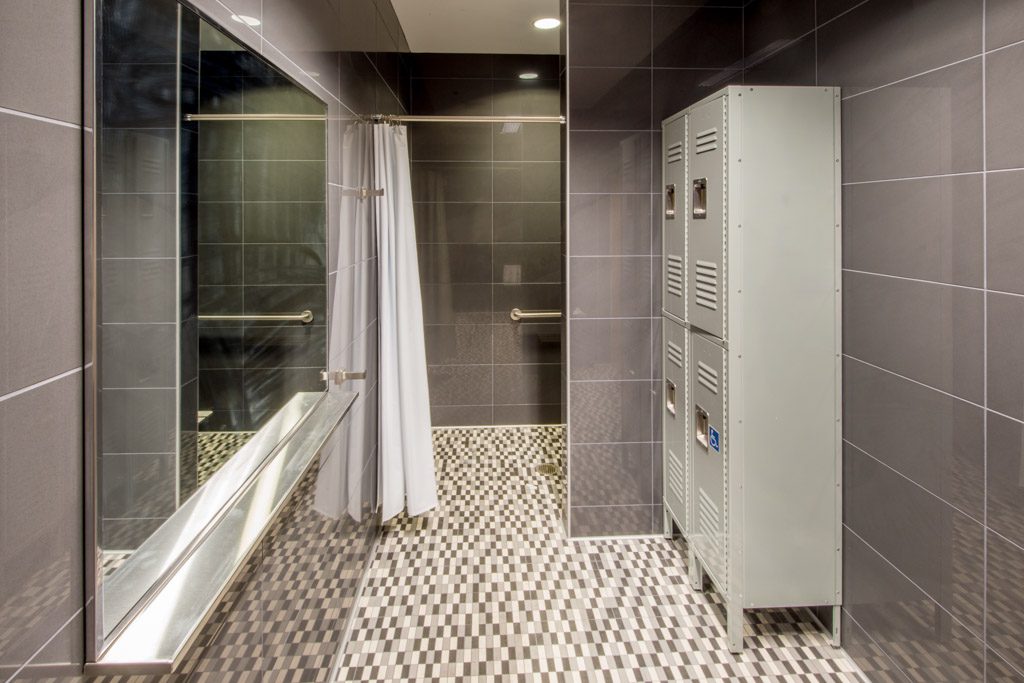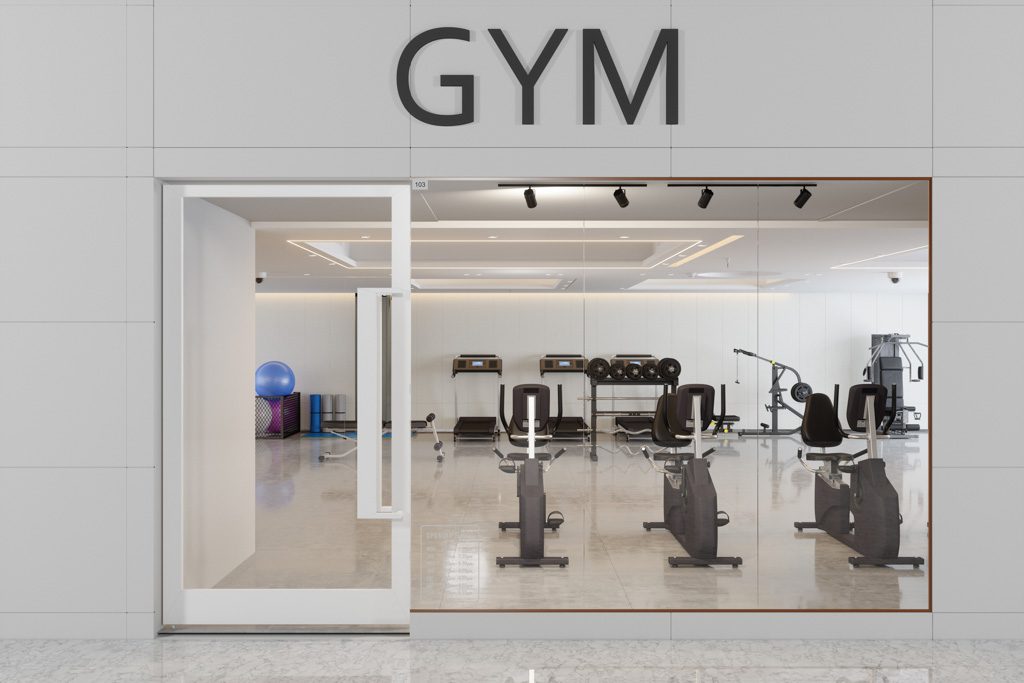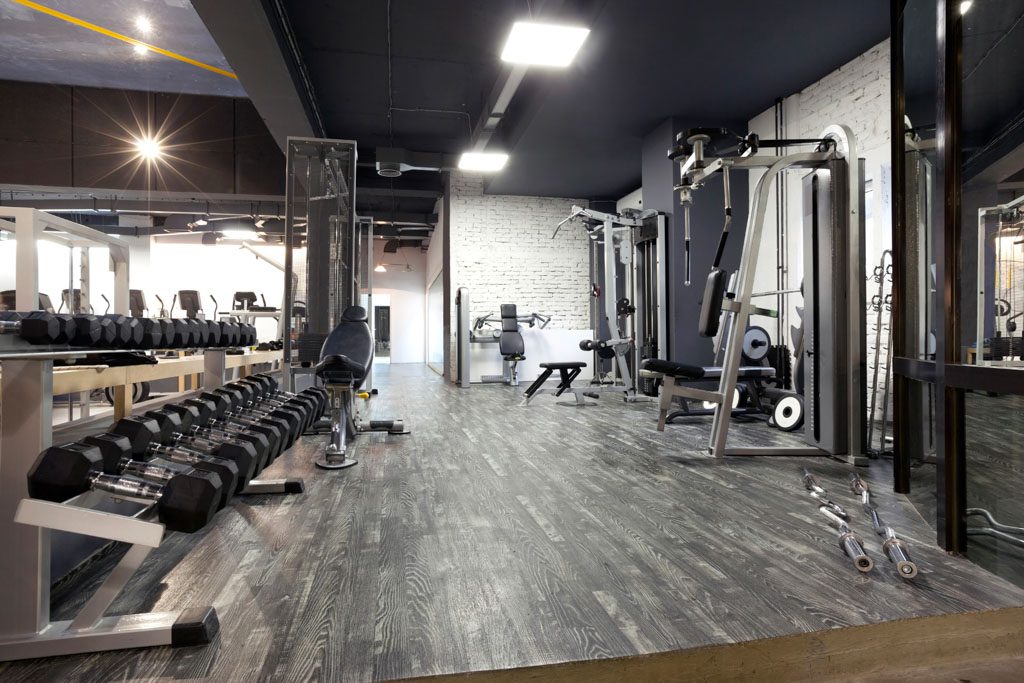Have you ever wondered what opening a gym is like? Maybe you’re thinking it involves coaching all day. The reality is that you might coach, but your main role is actually to run and grow the business, not just deliver the service.
Assuming the role of gym owner is a daunting task. Dealing with the cost of opening a gym is just the beginning. After that, you carry the weight of the gym’s destiny on your shoulders. The ultimate responsibility of your gym’s success belongs to you, the owner.
As the owner, you make the final decisions on everything, such as marketing, operations, finances, personnel, equipment, emergency procedures and resolution of disputes. As a result, you must be a confident leader but worst-case-scenario thinker who plans for any hiccup that might come along.
Your Evolution as a Gym Owner
Your most essential function as an owner in the early stages is being a generalist who can do everything. But soon, you’ll need to master team building and delegation because you just can’t do every job by yourself for long, even if you “wear all the hats” when you first open. To grow your business, you’ll need to assemble a competent team to fill all the roles in the gym: including group coach, personal trainer, programmer, bookkeeper, cleaner, client success manager, general manager, salesperson and so on.
The transition to ownership can be difficult if you’ve been a coach for a long time. Owning a gym comes with harsh realities, variable challenges and many possible pitfalls.
For example, this ultra-competitive industry closes over 50 percent of new gyms within five years. But don’t let that deter you: With mentorship, preparation and perseverance, you can build a profitable gym that rewards you financially as you help clients improve their health.
In this article, you can compare your expectations of what’s it like to open a gym to the actual reality of gym ownership. It will also provide advice on how to establish a lasting gym business—use it as your checklist for opening a gym that will thrive.
The Owner’s Time Commitment
As a gym owner, your workday doesn’t end when the last member leaves and the floor lights go off. You are not a coach or other employee who can exit your role when your shift ends. You are a gym owner 24/7.
It’s nearly impossible to cover all your duties in eight or 10 hours. In the early stages, you’re responsible for absolutely everything. Be prepared to work long hours to make your gym successful.
The way out: You have to be great at building a team around you, delegating and ensuring your team meets your service standards. If you don’t, you’ll have to do everything yourself forever, and you’ll burn out.
Don’t make the mistake many others have and plan to work 60 hours a week forever. It’s not sustainable, and “grinding” isn’t enough. Be prepared to work hard to get to break-even, but once you get there, start looking for ways to build a team that can reduce your workload and give you more time to grow the business.
Key Assets: Dedication, perseverance, team-building skills.

Opening a Gym: The True Cost
The most sobering part of opening a gym is the cost. Depending on the specifics, the cost of opening a small to mid-sized gym is between $65,000 to $115,000, according to Sage.com. In Two-Brain’s 2021 “State of the Industry” report, the cost to open a fitness facility ranged from $53,410 for yoga studios to $185,666 for martial-arts practices (CrossFit gyms: $54,666).
Those numbers can go way up if you decide to open a huge facility or purchase the most modern machines. The price can go even higher if you intend to build a gym from the ground up. In 2025, equipment costs are increasing quickly, so be sure to run your numbers with current prices.
When you start your gym checklist of expenses, it’s better to sort them into two categories: one-time and ongoing. Opening a gym is a significant financial commitment that requires a lot of thought and critical decision-making on your part. As such, you may not need all the items we detail in this section, but they’ll give you a good impression of what it’s like to open a gym from an accounting standpoint.
One-Time and Start-Up Expenses
Choosing the location of your gym is one of the most critical decisions, and the final choice is not an easy one. For example, if you choose millennials and Gen Xers as your target members, setting up in a location where they live, work and play will typically cost you more than facilities outside this zone—industrial parks, warehouse districts, etc.
However, picking the cheaper location might end up costing you more in added marketing expense and missed walk-in business, especially if you decide to offer classes. Even if you intend to emphasize digital marketing, it can be advantageous to be part of your potential members’ habitat.
Gym size is an equally important cost decision because it directly affects your revenue potential. More space gives you room for more member capacity, added income from classes and the potential to scale up as your gym grows. If you’re seeking funding through a traditional bank, it will want to know your long-term plans for the gym, and thinking big can sometimes be better than thinking small.
But keep in mind larger facilities cost more, and when they aren’t full, you can lose a lot of money. Bigger just isn’t always better. For example, Two-Brain Business data reveals the most profitable microgyms have between 2,500 and 4,000 square feet.
Smaller Start-Up Costs
Once you have decided on the location and size of your gym, you must consider the typical start-up expenses like licenses and permits, legal fees, building modification costs, and possibly real estate agent fees. Also, you must think about all the ancillary costs involved in opening a gym, such as:
- Signs, business cards, office supplies.
- Setting up your computer, phones and point-of-sale systems.
- Gym equipment acquisition and setup.
- Website setup.
- Operating cash or line of credit.
There are many ways to obtain funding for your gym, and each path has pros and cons. To review sources from investors and partners to bank loans and SBA loans, click here.
Click here for a customizable CrossFit gym business plan.

Ongoing Costs After Opening a Gym
The ongoing costs vary according to the size and demands of your gym business. Before you open your gym, you should have an accurate tally of the month-to-month cost of doing business. This ledger should be a vital part of your opening a gym checklist.
The list of ongoing expenses should include the exact amount of your monthly and annual payments for your mortgage or lease/CAM payments, along with other regular costs. These costs can be divided further into fixed and variable costs if you wish.
Below, you’ll find a list of other ongoing expenses and their average monthly cost. Keep in mind the numbers will vary widely depending on your facility and business model.
- Expect to pay between $2,660 to $11,000 annually for full-coverage insurance.
- If you choose not to purchase gear, budget $3,900 to $8,000 a month for equipment leasing.
- Utilities: $1,000 to $6,000 (heavily influenced by climate and facility size).
- Equipment maintenance and repairs: $500-$2,000.
- Cleaning supplies: $150 to $300.
- Employee wages: Variable depending on local market rate, experience and compensation/bonus/commission structure.
- Wi-Fi: $75 to $100.
- Advertising and promotion: $100 to $7,000 (you might choose to do-it-yourself with Facebook ads or hire a marketing agency. Resource: “Should You Hire an Ad Agency for Your Gym?”).
Depending on your business situation, you might incur monthly expenses other than the ones listed. You should also have at least $1,000 of petty cash on hand for unexpected expenses.
Key Assets: Foresight, financial acumen.
Marketing Responsibilities
When you visit gyms comparable to yours, you might notice that most of them are similar in design, set-up and approach. It is your job to emphasize what makes your gym a better choice than the others.
Once you have determined the essential qualities that make your gym special, you must effectively communicate your gym’s attributes to the marketplace. Clients will not just show up because you are a good coach—a marketing and sales plan is essential to opening a gym.
If you are not already, you must become an expert seller and marketer or you will not get the membership numbers needed to sustain a vibrant gym. You must present a product and image to gym goers, creditors, suppliers, and trainers and other employees. Your ability to build and showcase a brand for your gym is pivotal to its success.
If you need help with this part of being a gym owner, many online resources are available to make you a better gym marketer and salesperson.
Subscribe to Two-Brain’s YouTube channel for gym sales training videos like this:
Sales Requirements
So how much do you need to sell? That will depend on your costs and desired profit margin. Many entrepreneurs start with a simple gross revenue calculation.
For example, the average Planet Fitness has 7,500 members. With a fifth of that (1,500), you could generate about $900,000 in gross income per year if each member pays $50 a month. Of course, personal training and group-class revenue would make the arrangement even sweeter.
More realistically, suppose you can only maintain 700 members—which is still a large number. If you’re able to acquire 700 members at $50 a month you could bring in a gross of about $420,000 just from membership fees. If you maintain a profit margin of 20-33 percent, you could draw an annual income of about $84,000 to $138,000 after opening a gym of this size.
Conversely, some microgym owners make $100,000 or more from just 150 clients who pay a premium rate for premium service. You can see a breakdown, including spreadsheets, in the PDF here. These facilities are based on coaching, not just facility access.
Whatever your revenue goal is, make sure your marketing plan can supply the numbers you need to hit it.
Key Assets: Business plan, Facebook/website/internet experience, vision.

Pricing Strategy When Opening a Gym
In a way, pricing for membership and services is part of marketing. A lower membership rate than your competition could be a differentiating factor that attracts new members—but you’ll need a lot of members if your rates are low. Similarly, limited-time offers and free gym passes can get people in the door but eat into profit margin.
On the other hand, amenities, high-touch services and personalized coaching can drive up your average rate and reduce your client requirements.
Runrepeat.com reports that monthly gym fees range from $10 a month at Planet Fitness to $79 a month at Life Time Fitness. Conversely, it’s not uncommon for smaller gyms that sell coaching to charge $250 to $300+ per month (see actual stats here).
In any model, you can maximize the potential of your pricing structure by offering different packages that allow you to upsell and cross-sell. Upselling will enable you to offer existing gym members an upgrade to a value-added package for a higher fee. Cross-selling allows existing members to add products or services to their current packages.
Remember: Your pricing structure and service menu are vital to your gym’s financial health. The start-up cost of your gym and the ongoing overhead will be significant factors in your pricing strategy. Also, your pricing structure will affect your gym’s growth potential. The key: knowing your gym’s value and what it has to offer, then linking that to your expenses and annual net profit goals. If you do that, you can confidently determine your pricing structure.
Don’t guess! Rely on math.
Key Assets: Spreadsheet skills, strategic planning.
Gym Member Retention
Keeping your members happy and loyal is essential to your gym’s health. For this reason, member retention is a critical performance metric for business owners. Membership fees contribute about 80 percent of most gyms’ overall revenue, yet most traditional gyms and health clubs lose about 28 percent of their members each year. Smaller studios generally have better retention rates due to personal relationships with fewer clients, but they still lose members, too.
However, on the brighter side, any improvements in member retention can have dramatic effects and change your marketing requirements. For example:
- Recruiting new members costs five times more than retaining current members.
- With a 60-70 percent success rate, selling to an existing member is much easier than selling to a new customer.
- Happy and contented members are your best salespeople. They become a key part of your marketing plan as a source of referrals.
- A solid member base provides an excellent opportunity for upselling and cross-selling.
Remember: Any increases in retention will result in a profit boost—a 5 percent retention improvement can increase profits by 25-95 percent, according to the International Health, Racquet and Sportsclub Association (IHRSA). And in 2018, Two-Brain discovered that the average gym owner who filled out our Gym Check-Up would have earned an extra $45,000 that year simply by increasing average retention by two months.
Retention Tactics
It’s very apparent that you will need a member retention strategy as part of your opening a gym checklist.
You should include methods to increase retention such as:
- Promoting social interaction—According to IHRSA, around 70 percent of gym members who have developed friendships with other members identify themselves as “club promoters.”
- Paying more attention to potential dropouts—Typically, these members have the lowest attendance records within the last two weeks. But you can reach out and save them if you’re monitoring attendance.
- Direct interaction between staff and members—IHRSA also reported that 90 percent of customers say they benefit from communication with staff members to the point it results in extra gym visits by the members
- Promoting group exercise to current members—Members who don’t participate in group exercise have a 56 percent higher cancellation risk (IHRSA).
Key Assets: Attendance tracking systems, a client success manager, goal review sessions and other regular touchpoints.

The Insatiable Need for Revenue: Creating Different Revenue Streams
Before you open for business, pre-selling memberships will help you offset your start-up costs and pad your member base. You can get a free “founders’ club” timeline and social media plan at startagym.com so you can open with cash in hand and clients in the building.
While general membership is important, relying on one or two income sources to sustain and grow your gym business is a tenuous plan at best. You can increase your gym’s chances for success by including several income sources in your gym opening plan. Some potential gym-related revenue streams are:
- Nutrition plans and nutrition supplement sales.
- Juice bar.
- Personal trainer packages.
- High-ticket coaching.
- Leasing space to a massage therapist, physiotherapist or chiropractor.
- Gym apparel sales.
You can also take advantage of the growing popularity of online personal training sessions and classes. For example, for clients who occasionally can’t make it to their favorite group class, you could offer a hybrid option that gives them the chance to attend the class in person or online. Hybrid memberships can include online coaching, PT, group classes, nutrition/mindset coaching and more.
Key Assets: Retail skills, nutrition coaching skills, team-building skills.

Finding Quality Staff and Training Talent
When opening a gym, one of your most crucial decisions will be on staff members and talent. It doesn’t matter whether you are leasing space to trainers/exercise class instructors or hiring them as employees. They are the ones who make daily personal contact with your membership. Because differentiation within the gym market is slim and members can be fickle, it’s important to have team members who share your vision and ambitions for the gym. You must ask yourself whether you can attract, retain and motivate exceptional training and support staff.
Your recruitment and retention of staff members should be as well planned and vigorous as your marketing and client-retention efforts. You must decide whether you will offer an incentive-based salary structure, profit sharing, core benefits, opportunities for advancement, or bonuses and commissions. Your decisions will have a huge effect on your budget and the type of staff people you attract.
If you have been in the gym industry already, you can start recruiting by exploring the pool of trainers and coaches you know. Beyond that, you can advertise on online job sites like Indeed, Glassdoor and Ladders.
In some cases, you might find a talented person who’s perfect for your business but lacks training experience. If that happens, Two-Brain Coaching can develop the candidate for you.
Key Assets: Compensation plan, opportunities for advancement, 4/9ths Model.
Resource:
Opening a Gym Checklist
When you consider all the facets of opening a gym, it is very apparent you will need a gym checklist to ensure you cover all the key points. It doesn’t need to be in the form of a business plan, but a business plan’s framework will help you organize your plan and reduce the risk of overlooking something.
You can download a business plan template here.
Open a Gym With a Mentor’s Help
If you’re considering opening a gym for the first time, all the challenges and details can be intimidating. It is impossible to know all the best ways to manage each situation with no prior ownership background. Having a seasoned mentor can make the journey much smoother and more profitable.
Seeking advice from other local gym owners might not be the best option because they may view you as a competitor, but some might be willing to help you.
Alternatively, you could seek guidance from successful business owners in other fields. You’ll learn a lot but miss out on industry-specific advice and consultation.
Many fitness entrepreneurs get professional guidance through Two-Brain Business, the largest gym mentorship practice in the world. Two-Brain has helped thousands of gym owners increase profits, membership numbers and revenue. To find out more about how you can avoid mistakes and reach profitability faster, book a free call here.

Making the Decision
Like starting any business, opening a gym is a significant commitment of money, time and resources. The decisions and problems you will face can be stressful and challenging. However, by assembling your support team and planning, you stand a much better chance of ending up with a successful gym business.
Remember this above all: When opening a gym, you are no longer just a coach or trainer. You’re an entrepreneur, and you’ll need to know more about business than about fitness.
Click here for more than a dozen free resources to help you start a gym.
About the Author: John Burson successfully ran a personal training business for over 20 years, and he has written volumes of published articles on business entrepreneurship, finance, and the fitness industry.

